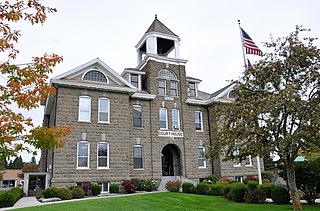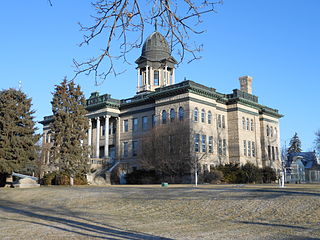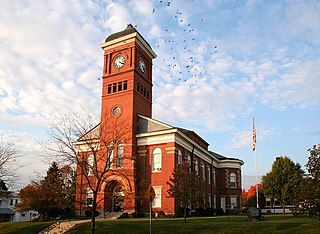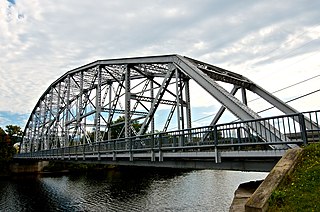Morrow County Courthouse | |
Exterior in 2012 | |
| Location | 100 Court St., Heppner, Oregon |
|---|---|
| Coordinates | 45°21′13″N119°32′56″W / 45.35361°N 119.54889°W Coordinates: 45°21′13″N119°32′56″W / 45.35361°N 119.54889°W |
| Area | Less than 1 acre (0.40 ha) |
| Built | 1902–03 |
| Built by | J. K. Carr |
| Architect | Edgar M. Lazarus |
| Architectural style | Eclectic American Renaissance |
| NRHP reference # | 85000366 [1] [2] |
| Added to NRHP | February 28, 1985 |
The Morrow County Courthouse is a building in Heppner in the U.S. state of Oregon. Built in 1902–03, it was listed on the National Register of Historic Places in 1985. It was among the early commissions of architect Edgar M. Lazarus. [2]
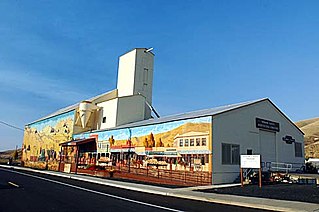
Heppner is an incorporated city and the county seat of Morrow County, Oregon, United States. As of 2010, the population was 1,291. Heppner is part of the Pendleton-Hermiston Micropolitan Area. Heppner is named after Henry Heppner, a prominent Jewish-American businessman.

In the United States, a state is a constituent political entity, of which there are currently 50. Bound together in a political union, each state holds governmental jurisdiction over a separate and defined geographic territory and shares its sovereignty with the federal government. Due to this shared sovereignty, Americans are citizens both of the federal republic and of the state in which they reside. State citizenship and residency are flexible, and no government approval is required to move between states, except for persons restricted by certain types of court orders. Four states use the term commonwealth rather than state in their full official names.

Oregon is a state in the Pacific Northwest region on the West Coast of the United States. The Columbia River delineates much of Oregon's northern boundary with Washington, while the Snake River delineates much of its eastern boundary with Idaho. The parallel 42° north delineates the southern boundary with California and Nevada. Oregon is one of only three states of the contiguous United States to have a coastline on the Pacific Ocean.
Built on the site of an earlier courthouse made of wood, the two-story building is made of locally quarried dark blue basalt and lighter trim stone from quarries near Elgin and Baker. Features include a hip roof, a central entrance pavilion, and a domed cupola with clock faces on three sides. [2]

Basalt is a mafic extrusive igneous rock formed from the rapid cooling of magnesium-rich and iron-rich lava exposed at or very near the surface of a terrestrial planet or a moon. More than 90% of all volcanic rock on Earth is basalt. Basalt lava has a low viscosity, due to its low silica content, resulting in rapid lava flows that can spread over great areas before cooling and solidification. Flood basalt describes the formation in a series of lava basalt flows.

Elgin is a city in Union County, Oregon, United States. The population was 1,711 at the 2010 census. The community is named after the Lady Elgin, a ship lost on Lake Michigan.

Baker City is a city in and the county seat of Baker County, Oregon, United States. It was named after Edward D. Baker, the only U.S. Senator ever killed in military combat. The population was 9,828 at the 2010 census.
The courthouse site is elevated above much of the rest of the city, and this saved the building from severe flood damage in 1903. County officials had moved into the building in March, and in June much of Heppner was destroyed and 247 people killed by a flash flood on Willow Creek, which bisects the city. [2]

Willow Creek is a 79-mile (127 km) long tributary of the Columbia River, located in the U.S. state of Oregon. It drains 880 square miles (2,279 km2) of Morrow and Gilliam counties. Arising in the Blue Mountains, it flows generally northwest to its confluence with the Columbia River upstream of Arlington.











